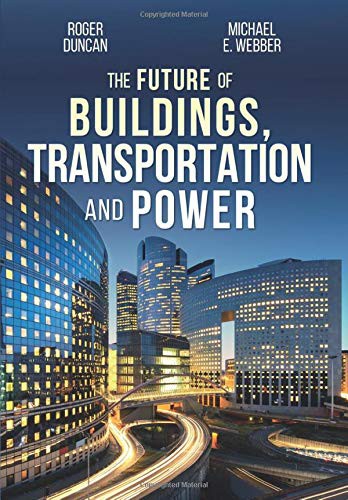A wide-ranging, thoughtful survey
4 steloj
The Future of Buildings, Transportation, and Power by Roger Duncan and Michael E. Webber was a good book for me to read in conjunction with Jonathan Porritt's Hope In Hell and Manifesto by Dale Vince as there is a significant subject overlap, but with each book giving its own distinct perspective on the subject of our future energy needs and the best way to meet them. I liked how Duncan and Webber emphasised the ways in which individuals can take steps to determine their own best building, transportation and power needs and solutions. This is particularly important to me and I particularly appreciated their common-sense assertions that we need to establish an array of site-specific solutions.
There are a lot of facts and figures in this book so it did feel a little dry at times, but I liked the clarity of the information presented to me. As a layperson, …
The Future of Buildings, Transportation, and Power by Roger Duncan and Michael E. Webber was a good book for me to read in conjunction with Jonathan Porritt's Hope In Hell and Manifesto by Dale Vince as there is a significant subject overlap, but with each book giving its own distinct perspective on the subject of our future energy needs and the best way to meet them. I liked how Duncan and Webber emphasised the ways in which individuals can take steps to determine their own best building, transportation and power needs and solutions. This is particularly important to me and I particularly appreciated their common-sense assertions that we need to establish an array of site-specific solutions.
There are a lot of facts and figures in this book so it did feel a little dry at times, but I liked the clarity of the information presented to me. As a layperson, I was learning basic technical terms and concepts throughout the chapters, but never felt as though the writing went over my head. I enjoyed seeing how people in the past and across the globe today are working to address similar questions, and the progression of our building, transportation and energy needs. The authors quote thinkers such as Vaclav Smil, while also giving their own ideas and impressions. I have hope that forward-looking private enterprises might just solve the climate crisis before we wipe ourselves out, and I love that returning to traditional wind and water power is a large part of our clean-energy future. Whether we will all be able the future incarnations of this technology is, ower, a completely different question!
I was impressed with the depth of consideration that Duncan and Webber have given to their subjects. For such a wide-ranging survey, this is a nicely readable book. The short evolving flash fiction pages give a good illustration of the progressions discussed in the main text and I liked the gentle humour throughout the work too.

